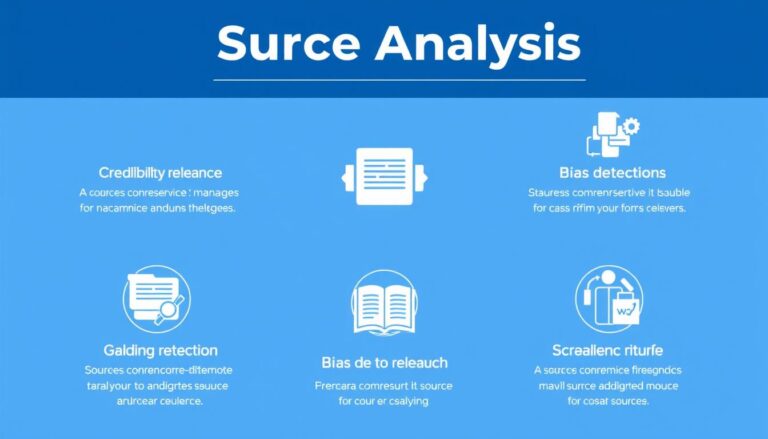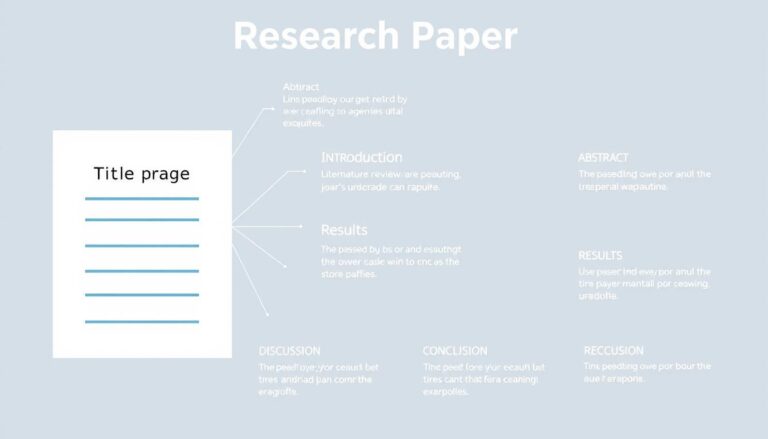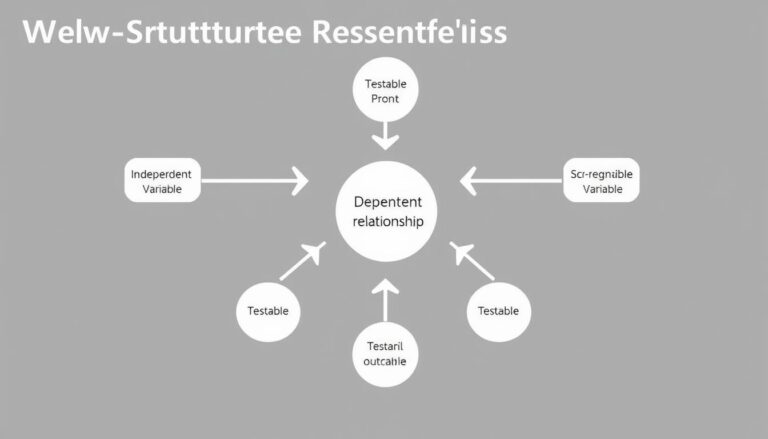Understanding language patterns and structures is crucial for effective communication. One valuable tool for achieving this is through concordancing, a method that provides insights into how words are used in context.
By examining concordance data, researchers and language learners can gain a deeper understanding of linguistic phenomena. For those seeking concordancing help, various resources are available to facilitate the analysis process.
Linguistic analysis tools, including concordancers, enable users to explore language use in a more nuanced way. These tools are essential for anyone looking to delve into the intricacies of language.
Key Takeaways
- Concordancing is a valuable method for understanding language patterns.
- Linguistic analysis tools provide insights into word usage.
- Concordance data helps researchers and learners alike.
- Various resources are available for those seeking concordancing assistance.
- Effective use of concordancers enhances language analysis.
Understanding Concordancing and Its Importance
The use of concordancers has revolutionized the field of language analysis, providing a deeper understanding of linguistic structures. Concordancing involves the use of software or tools to analyze large databases of text, known as corpora, to identify patterns and trends in language use.
What Is a Concordancer?
A concordancer is a tool or software that enables users to search and analyze corpora, providing insights into how words and phrases are used in different contexts. By using a concordancer, researchers can identify common patterns, such as collocations, idiomatic expressions, and grammatical structures.
The Role of Concordancing in Linguistic Research
Concordancing plays a vital role in linguistic research, enabling researchers to explore language use in a systematic and empirical way. By analyzing large corpora, researchers can gain a deeper understanding of linguistic phenomena, such as language change, variation, and acquisition.
Concordancing also supports data-driven learning, allowing researchers to test hypotheses and validate findings through the analysis of large datasets.
Benefits of Using Concordancers for Language Analysis
Concordancers have revolutionized the field of linguistic analysis by providing insights into language patterns that were previously difficult to discern. These tools offer a range of benefits that enhance our understanding of language use and structure.
Identifying Patterns in Language Use
One of the primary advantages of using concordancers is their ability to identify patterns in language use. By analyzing large corpora, concordancers can reveal how words are used in context, including their collocates, frequencies, and grammatical patterns. For instance, a concordancer can show how a particular word is used in different genres or registers, providing valuable insights for linguistic research.
Contextual Understanding of Vocabulary

Concordancers also facilitate a deeper understanding of vocabulary in context. By examining how words are used in different sentences and contexts, learners and researchers can gain a more nuanced understanding of word meanings and connotations. As John Sinclair, a renowned linguist, once noted, “The meaning of a word is not fixed, but is determined by its context.”
Supporting Data-Driven Learning
Furthermore, concordancers support data-driven learning, an approach that encourages learners to explore language patterns and rules through direct observation of linguistic data. This method fosters a more active and engaged learning process, as learners are able to discover language rules and patterns for themselves.
| Benefits | Description |
|---|---|
| Pattern Identification | Reveals how words are used in context, including collocates and frequencies. |
| Contextual Understanding | Provides insights into word meanings and connotations through contextual analysis. |
| Data-Driven Learning | Encourages learners to explore language patterns through direct observation. |
Types of Concordancers Available for Australian Users
In Australia, individuals can select from a broad spectrum of concordancers designed to facilitate linguistic research and analysis. These tools are essential for concordancing help and enhancing linguistic analysis. The variety ensures that users can find a concordancer that suits their specific needs, whether for academic research, language teaching, or professional linguistic analysis.
Online Concordancers
Online concordancers offer convenience and accessibility. They are web-based tools that can be accessed from anywhere, making them ideal for users who need to analyze language corpora without the need for software installation. Some popular online concordancers include:
- Tools that provide instant access to vast corpora
- Websites offering user-friendly interfaces for querying corpora
- Platforms that allow for the analysis of various English language corpora, including Australian English
Downloadable Software Options
For those who prefer a more traditional approach or require advanced features, downloadable concordancer software is available. These programs can be installed on a computer, offering powerful analysis capabilities. Key features often include:
- The ability to create and analyze custom corpora
- Advanced search functionalities using regular expressions or wildcards
- Options for sorting and filtering results to facilitate in-depth analysis
Corpus-Specific Concordancers for Australian English
Some concordancers are specifically designed for analyzing Australian English corpora. These tools are invaluable for researchers focusing on the nuances of Australian English. They provide insights into language use, vocabulary, and grammatical structures unique to the region.
By understanding the different types of concordancers available, Australian users can make informed decisions about which tools best suit their linguistic analysis needs.
Comprehensive Concordancing Help: A Beginner’s Guide
Concordancers are powerful tools for language analysis, and learning to use them is easier than you might think. For beginners, understanding the basics of concordancing can significantly enhance their linguistic research capabilities.
Setting Up Your First Concordancer
To start using a concordancer, you first need to set it up correctly. Most concordancers are available online or as downloadable software. Once you’ve chosen a concordancer that suits your needs, follow the installation or access instructions provided. Typically, this involves creating an account or downloading the software to your device.
Understanding the Interface
After setting up your concordancer, the next step is to understand its interface. The interface usually includes options for searching, filtering results, and sometimes even visualizing data. Familiarize yourself with these features to maximize your use of the concordancer.
Creating Your First Query
With your concordancer set up and its interface understood, it’s time to create your first query. Start with simple searches, such as looking up a specific word or phrase. As you become more comfortable, you can explore more complex queries using wildcards or regular expressions.

By following these steps, beginners can quickly become proficient in using concordancers for their language analysis needs. Remember, practice is key to mastering the use of these powerful tools.
Basic Concordancing Techniques
Basic concordancing techniques form the foundation of comprehensive language analysis. These techniques enable users to extract valuable insights from large corpora, making them indispensable for linguistic research.
Simple Word Searches
One of the most straightforward concordancing techniques is the simple word search. This involves searching for a specific word within a corpus to understand its usage and context. For instance, searching for the word “data” can reveal its frequency and the words it commonly collocates with.
Using Wildcards and Regular Expressions
To refine searches, concordancers often support the use of wildcards and regular expressions. Wildcards allow users to search for variations of a word, while regular expressions enable complex pattern searches. For example, using a wildcard to search for “analys*” can capture “analyse,” “analysis,” and “analyst.”
Sorting and Filtering Results
After conducting a search, sorting and filtering results can help in analyzing the data more effectively. Concordancers typically allow users to sort results alphabetically or by frequency, and filter them based on specific criteria. This functionality is crucial for identifying patterns and anomalies in language use.
| Technique | Description | Example |
|---|---|---|
| Simple Word Search | Searching for a specific word | Searching for “run” |
| Using Wildcards | Searching with variations of a word | Searching for “run*” to include “runs,” “running,” etc. |
| Regular Expressions | Complex pattern searches | Searching for words starting with “re” using “^re.*” |
By mastering these basic concordancing techniques, users can significantly enhance their linguistic analysis capabilities, making it easier to understand complex language patterns and usage.
How to Use Concordancers for Advanced Analysis
Concordancers offer a range of advanced tools for linguistic analysis, enhancing our understanding of language structures. These tools are essential for researchers and linguists looking to conduct in-depth analyses of language data.
Collocation Analysis
Collocation analysis is a powerful feature of concordancers that helps identify words frequently used together. This analysis provides insights into common language patterns and can be particularly useful in language teaching and learning.
By examining collocations, researchers can understand how words are used in context, which is crucial for accurate linguistic analysis. For instance, the word “strong” often collocates with “coffee,” “argument,” or “feelings,” revealing typical usage patterns.
Frequency Lists and Keywords
Frequency lists and keyword analysis are other advanced features of concordancers. Frequency lists show how often words appear in a corpus, while keyword analysis identifies words that are significantly more common in one corpus compared to another.
These features are invaluable for linguistic research, as they help identify characteristic language use in different genres or contexts. For example, comparing the frequency lists of academic and conversational English can highlight key differences in vocabulary usage.
Part-of-Speech Tagging
Part-of-speech (POS) tagging is a technique used to identify the grammatical category of each word in a corpus. Concordancers with POS tagging capabilities enable researchers to analyze the grammatical structure of sentences and phrases.
Semantic Analysis
Semantic analysis involves examining the meaning of words and phrases in context. While concordancers may not directly perform semantic analysis, they can be used to identify patterns that inform such analysis. By analyzing how words are used in different contexts, researchers can gain insights into their meanings and connotations.
Advanced concordancing techniques, including collocation analysis, frequency lists, POS tagging, and semantic analysis, significantly enhance the capabilities of linguistic research. By leveraging these tools, researchers can conduct more nuanced and accurate analyses of language data.
Applying Concordancing to Specific Language Tasks
By utilizing concordancers, researchers can delve into specific language tasks such as vocabulary research and grammar pattern analysis. Concordancing is particularly useful in the Australian context, where it can be applied to understand the nuances of Australian English.
Vocabulary Research in Australian English
Concordancers can be used to investigate how vocabulary is used in different contexts within Australian English. For instance, researchers can analyze the frequency and usage patterns of specific words or phrases in Australian corpora.
Example: A study might examine the use of colloquialisms in Australian English, revealing how certain words are more prevalent in informal settings.
Grammar Pattern Analysis
Concordancing tools enable the analysis of grammar patterns, helping researchers understand how grammatical structures are used in real-life language scenarios. This can be particularly insightful when comparing different varieties of English.
Discourse Analysis
Discourse analysis involves examining how language is used in social contexts. Concordancers facilitate this by allowing researchers to analyze large datasets to identify patterns in discourse.
Identifying Australian English Variants
A key application of concordancing in Australian English is identifying variants that are unique to the region. This involves analyzing corpora to pinpoint differences in vocabulary, grammar, and usage.
For example, a concordancer can be used to compare the usage of certain phrases in Australian English versus other forms of English, highlighting the distinct characteristics of Australian English.
| Task | Concordancer Application | Benefit |
|---|---|---|
| Vocabulary Research | Analyzing word frequency and context | Understanding usage patterns |
| Grammar Pattern Analysis | Examining grammatical structures | Insights into real-life language use |
| Discourse Analysis | Identifying patterns in discourse | Understanding social context of language |
As noted by linguist John Sinclair, “The study of language through corpora allows us to see patterns that were previously hidden.” This underscores the value of concordancing in linguistic research.
“The study of language through corpora allows us to see patterns that were previously hidden.”
In conclusion, concordancing is a versatile tool that can be applied to a range of specific language tasks, offering valuable insights into the structure and use of Australian English.
Practical Applications of Concordancing in Australia
In Australia, concordancing is being applied in diverse contexts to enhance language understanding. The use of linguistic analysis tools has become increasingly prevalent across various fields.
Language Teaching and Learning
Concordancing is being utilized in language teaching to provide students with real-life examples of language usage. This approach helps learners understand the context in which words and phrases are used, enhancing their linguistic competence. For instance, a study on the application of concordancing in language learning can be found in research papers such as those available on academic databases.
Translation and Localisation
In the field of translation and localisation, concordancers aid in identifying the most appropriate translations by analyzing large corpora of texts. This ensures that the translated content is not only accurate but also culturally relevant.
Academic Research
Researchers in Australia are leveraging concordancing to analyze large datasets, thereby uncovering patterns and trends that were previously difficult to detect. This has significant implications for various fields of study, including linguistics and literature.
Content Creation and Editing
Content creators and editors are using concordancing tools to refine their work, ensuring that the language used is consistent and appropriate for the target audience. This is particularly useful in maintaining the tone and style of publications.
The practical applications of concordancing in Australia demonstrate its value as a linguistic analysis tool. By providing insights into language use, concordancing helps professionals and academics alike to make informed decisions.
Case Studies: Successful Concordancing Projects
Several case studies highlight the effectiveness of concordancing in Australian academic and professional settings. These examples demonstrate how concordancers have been utilized to analyze language patterns, improve educational materials, and enhance professional language analysis.
Australian Academic Research Examples
In Australian universities, concordancers have been employed to study linguistic patterns in large corpora. For instance, researchers at the University of Melbourne used concordancing to analyze the usage of Australian English in various contexts, providing valuable insights into lexical and grammatical variations.
Educational Applications in Australian Institutions
Concordancing has also been integrated into language teaching curricula in Australian educational institutions. Teachers use concordancers to create data-driven learning materials, helping students understand complex linguistic structures and vocabulary usage. For example, a study at the University of Sydney showed that students who used concordancers to analyze corpus data improved their language skills more significantly than those who did not.
Professional Language Analysis in Australian Media
Professional linguists and media analysts in Australia have adopted concordancing to analyze language use in news articles, broadcasts, and social media. By examining large datasets, they can identify trends and patterns that inform their work, from improving communication strategies to detecting biased language.
| Case Study | Application | Outcome |
|---|---|---|
| University of Melbourne Research | Analysis of Australian English | Insights into lexical and grammatical variations |
| University of Sydney Study | Data-driven language learning | Improved language skills in students |
| Australian Media Analysis | Language trend analysis | Informed communication strategies |
These case studies illustrate the versatility and effectiveness of concordancing in various Australian contexts, from academia to professional media analysis. By leveraging linguistic analysis tools like concordancers, researchers and professionals can gain deeper insights into language use and improve their work.
Troubleshooting Common Concordancing Issues
Effective concordancing requires not just knowledge of the tool but also the ability to troubleshoot common problems. Users often encounter challenges that can impede their language analysis, from handling extensive corpora to refining searches and interpreting results.
Dealing with Large Corpora
One of the primary issues with concordancing is managing large datasets. To address this, users can employ several strategies:
- Limit the corpus size by focusing on specific texts or genres.
- Utilize corpus partitioning to divide the data into manageable sections.
- Apply frequency filters to highlight the most common terms.
Refining Overly Broad Searches
Overly broad searches can yield too many results, making analysis cumbersome. To refine searches:
- Use specific keywords or phrases to narrow down the query.
- Employ wildcards and regular expressions to target specific patterns.
- Utilize the sorting and filtering options to prioritize results.
Interpreting Unexpected Results
Sometimes, concordancers produce unexpected results. To interpret these:
Check for errors in the query syntax or inconsistencies in the corpus. Consider the context in which the results are presented.
Technical Solutions for Common Problems
For persistent issues, consider updating your concordancer software or consulting the user manual for concordancing help. Learning how to use concordancers effectively is key to resolving technical issues.
Conclusion: Mastering Concordancing for Enhanced Language Analysis
Mastering concordancing is a valuable skill for anyone involved in linguistic research or language analysis. By understanding how to effectively use concordancers, individuals can uncover patterns and insights in language use that might otherwise remain hidden. This skill is particularly relevant in Australian English, where concordancers can help analyze local language trends and variations.
Throughout this article, we’ve explored the benefits and applications of concordancers, from identifying patterns in language use to supporting data-driven learning. By leveraging linguistic analysis tools like concordancers, researchers and language learners can gain a deeper understanding of how language works in different contexts.
For those looking to improve their language analysis skills, concordancing help is readily available. Whether you’re a student, researcher, or language professional, mastering concordancing can enhance your work and open up new possibilities for linguistic research and analysis.
As you continue to explore the world of concordancing, remember that these powerful tools can help you uncover new insights and drive meaningful discoveries in language analysis.





